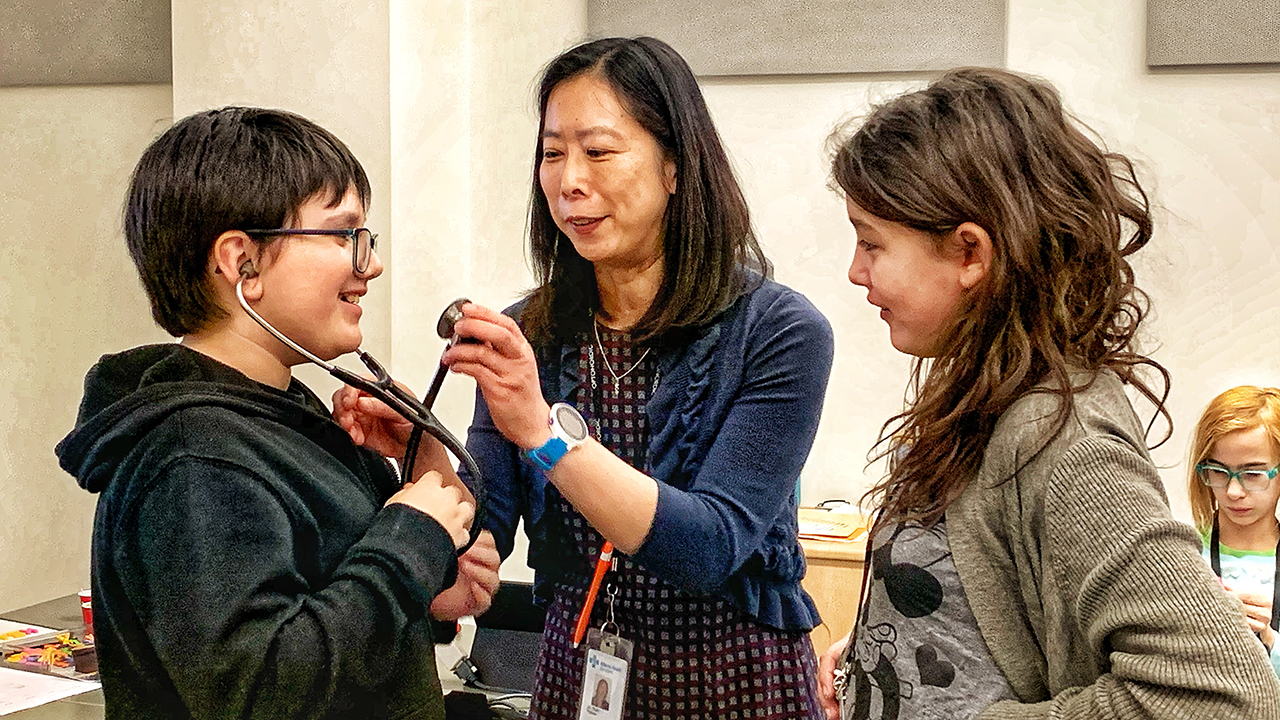Volunteers make an impact at home and abroad
Tamara Vineberg - 03 February 2020

Department of Pediatrics faculty and trainees are discovering that using their skills for volunteering can pay dividends. They are treating patients, teaching peers and conducting research to aid those who don’t have the same resources. Four department members describe how volunteering has changed their lives.
Bringing supplies and expertise to help in a crisis
What Bonnieca Islam noticed the most while volunteering with Rohingya refugees in Bangladesh refugee camps is that the children don’t smile. “You can’t undo all the trauma they have seen,” she says.
Islam, an associate teaching professor in the Division of General and Community Pediatrics, and Amaly Rahman, an assistant clinical professor in the Division of Emergency Medicine, decided to volunteer through MedGlobal in February 2019. Although they were both born in Canada, they have strong family ties to Bangladesh and were aware of how over one million Rohingya refugees fled Myanmar to avoid persecution. Half of these refugees are children. Not only did Islam and Rahman travel to Bangladesh to treat children, they also educated the local physicians about pain control, intranasal sedation and asthma protocols. Rahman was able to have 500 respiratory spacers donated from a pharmaceutical company to take to the refugee camp.
The volunteers focused on primary care during the seven-day trip. Because of the lack of access to immunization, they saw children with chicken pox, measles and mumps, along with other respiratory illnesses. Security was tight and they drove two hours each way every day to access the camp. “It is really hard to comprehend until you get there. What really struck me was the huge scale of the problem,” says Islam.
Rahman was impacted by how the refugees have been stuck in a bubble for years. “They have free medicine, they get food, they get shelter — although not by any good standards whatsoever — yet they don’t have freedom. They can’t leave their camps, some of which actually began in the 1990s. Incredibly, there are some camps that have three or four generations living there,” she says.
Islam and Rahman were both challenged to treat patients with limited resources but they were happy to contribute. “When I was there, I was tired but I just felt this is medicine that I wanted to do, helping vulnerable populations and seeing people that others may have forgotten,” says Islam.
“You’re very limited in what you can do. On the inside, Bonnie and I felt so sad for these people. But we were always smiling and laughing because the joy you brought to the patient felt just as important as the medicine,” says Rahman.
Influencing bright minds of the future
Edythe Tham took her time explaining to a classroom full of Grade 6 students what they were going to experience during her session at U School. It was her first time volunteering for the University of Alberta program that introduces kids to secondary education. The students were spending the next two hours with Tham and several trainees learning about pediatric cardiology, including how MRI and echocardiography tests work, as well as visiting the 3D Servier Virtual Cardiac Centre.
As an associate professor in the Division of Pediatric Cardiology, Tham is more familiar with teaching medical students and residents. An invitation for U School volunteers piqued her interest. “I enjoy working with kids and I thought that we could provide a worthwhile experience for them,” she says.
U School introduces Grades 4 to 9 students from socially vulnerable, FNMI (First Nation, Métis, and Inuit), Northern and rural communities to various programs within the U of A for a week. Tham’s experience was positive and she plans to organize another team of trainees to volunteer again for the program. “For the next opportunity, I would try to bring the students to different units to see what the MRI machine and an echo lab look like,” says Tham.
Helping cardiac patients in the Americas
The impact of helping families in underdeveloped countries is what keeps Daniel Garros returning to volunteer. Garros, a clinical professor in the Division of Pediatric Critical Care, has been on 12 volunteer missions since 2012. The Brazil native first became involved with an American non-governmental agency, influenced by some of his Stollery Children’s Hospital colleagues, because he could help with Spanish translation. The US-based foundation provides heart surgeries for children who could not otherwise be operated on in underdeveloped countries. Lately, he has been volunteering with Gift for Life International, a Rotarian-based organization with a similar mandate.
The medical missions have taken Garros to Ecuador, Guyana, Dominion Republic and Mexico. “As a pediatric intensivist, I participate in the pre- and post-operative care, looking after the children in the ICU and teaching the local teams to one day take over their cardiac surgery programs,” he says.
His week-long trips have become part of his life and he gains from volunteering as well as contributing to the team. “The main thing for me is the joy of helping out and being able to see that you make a difference. The local families are very grateful for your work. So the impact of that makes you go back.You also learn a lot from colleagues from all over the world who are part of the mission. You learn how to do things differently, achieving the same or even better results. In fact, I have taken what I learned in these interactions and applied this knowledge at the Stollery,” says Garros.
His latest mission was in Mexico where 15 children, who had no chance otherwise, had successful operations. He encourages his colleagues and residents in the Department of Pediatrics to go on a volunteer mission. “It’s a life changing experience. You see how privileged and blessed we are here and how much you can contribute. Once you start, you don’t want to stop,” says Garros.
For more information about volunteering, visit the following site:
U of A Alumni office